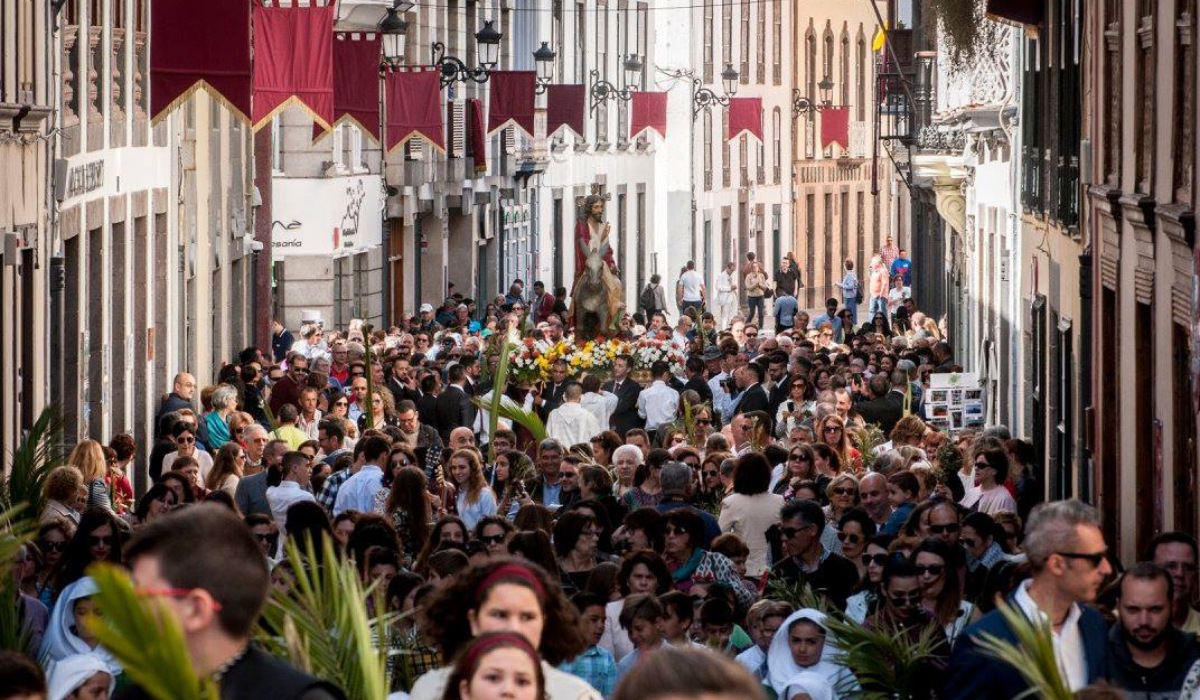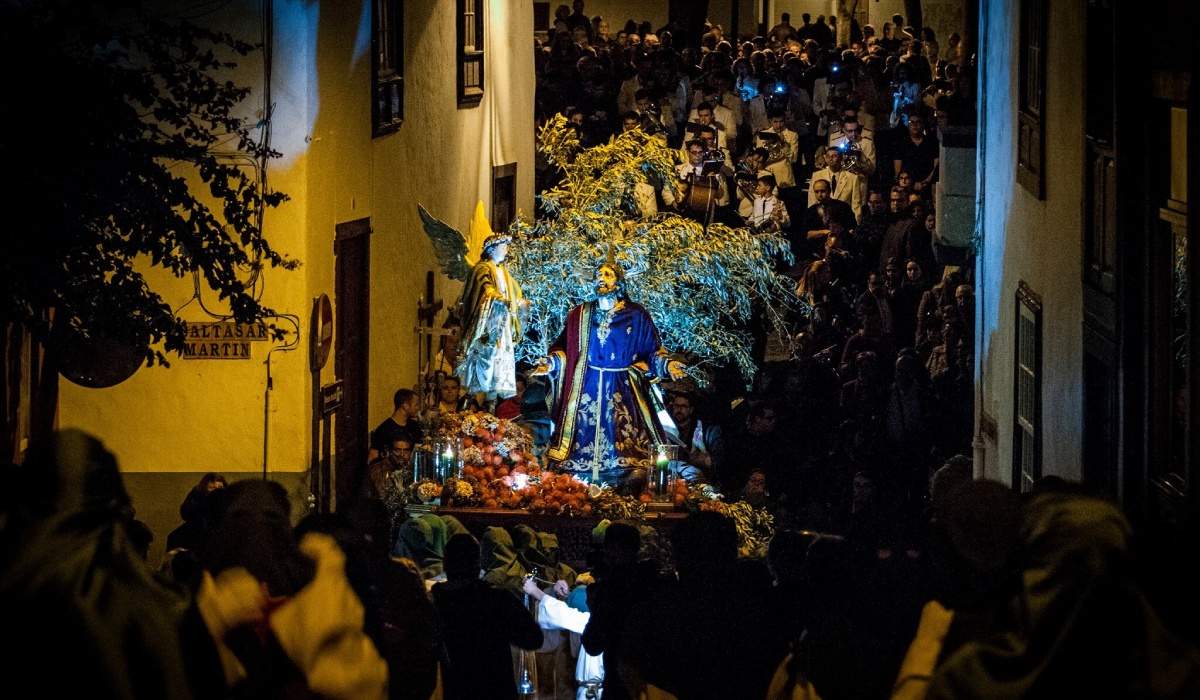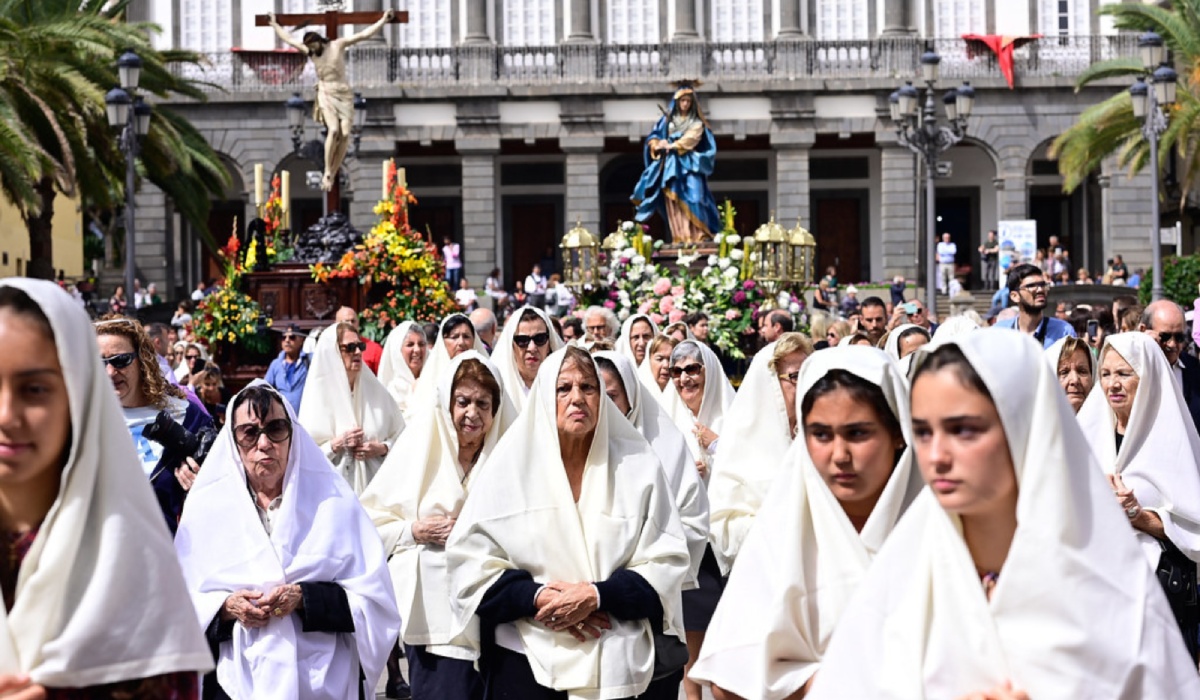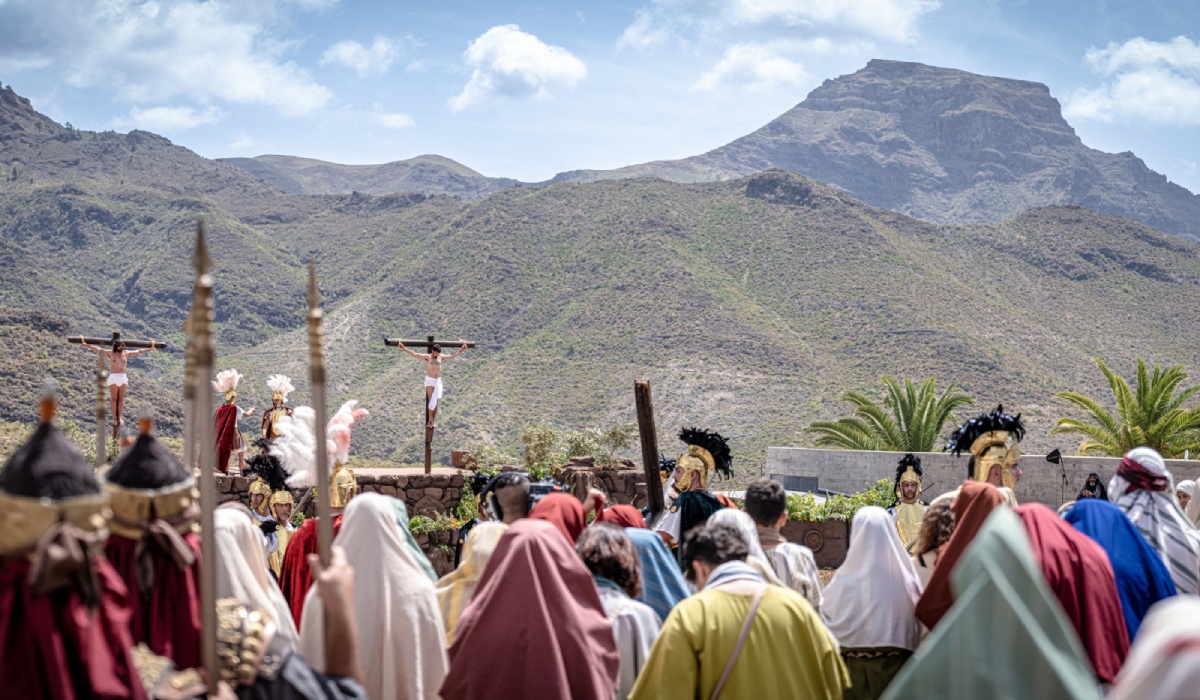This is how Easter is celebrated in the Canary Islands
Have you ever spent Easter in the Canary Islands? Holy Week is a unique fiesta combining tradition, devotion and colour.
The festivities offer a perfect opportunity to learn more about culture and faith on these beautiful islands. This year, Semana Santa will be celebrated from Sunday 24 March to Sunday 31, 2024. The main festivities happen on Thursday and Good Friday.
If you’re planning a trip to one of our Princess hotels in the Canary Islands, grab your chance to visit one of the most important celebrations in La Palma, Tenerife, Gran Canaria and Fuerteventura.
Easter in La Palma: a unique experience
FotoCofrade La Palma
The ‘Cristo de la Piedra Fría‘ procession is one of the oldest in the Canaries, and is an officially recognised ‘Fiesta of Tourist Interest’. It’s celebrated on the evening of Holy Thursday in the city of Santa Cruz de La Palma.
The statue of Cristo de la Piedra Fría, in carved and painted wood dating from the sixteenth century, is carried on the shoulders of the ‘costeleros’ from the ‘Cofradía del Señor de la Piedra Fría’ (the brotherhood of the same name) and paraded through the town accompanied by faithful followers and musicians playing funeral marches.
The procession begins in the Church of La Concepción and parades through the city centre streets via the Plaza de España, cathedral and town hall. At the end of the procession, the statue is deposited in the Church of La Concepción.
Another highlight is the procession of Nuestra Señora de los Dolores (Our Lady of Sorrows), which takes place on Good Friday in Santa Cruz de La Palma. This procession is one of the most solemn ones, and the city streets are filled with locals in mourning dress.
The procession of ‘Jesús Nazareno’ (Jesus of Nazareth) is one of the oldest and most traditional in La Palma. It’s celebrated on Good Friday in Garafía, a municipality in the north of the island.
The Quema de Judas (Burning of Judas) takes place on the night of Holy Saturday, and is a unique tradition symbolising the defeat of evil. It’s celebrated in many of La Palma’s towns, with some putting on spectacular fireworks displays to celebrate the burning of Judas.
The Procesión del Encuentro (Meeting Procession) takes place on Easter Sunday in Santa Cruz de La Palma, and is one of the island’s most exciting Easter events. In this one, effigies of the Virgen de las Angustias (Virgin of Anguish) and Jesús Resucitado (Resurrected Christ) meet, surrounded by devoted followers who gather for this emotional moment.
Easter holidays in Gran Canaria: a fiesta of devotion
Image courtesy of Tony Hernández
The old town centre of the island’s capital, with its many churches and chapels, is an important venue at Easter.
Palm Sunday is a highlight, with its ‘La Burrita’ procession representing Christ’s triumphant arrival in Jerusalem. The procession starts and ends at San Bernardo parish church in San Telmo park.
That same afternoon sees another famous procession: the ‘Ilustre Hermandad y Cofradía de Nazarenos de Nuestro Padre Jesús de la Salud y María Santísima de la Esperanza de Vegueta’, also known as the Vegueta Procession of Hope and ‘Los Nazarenos’. The procession parades through the city’s old town, and any curious visitors can attend the ‘Estación de Penitencia’ (penance station) on the evening of Palm Sunday in the cathedral of Santa Ana.
- Magna Interparroquial Procession (Good Friday): This is a procession that attracts one of the biggest audiences to the Gran Canaria capital, and is also one of the most beautiful. It brings together the parishes of Santo Domingo, San Agustín and San Francisco, all marching with their different pasos (floats of lifelike wooden sculptures)
- Vía Crucis (Good Friday): At midnight on Good Friday, the mountain village Teror is brought to life with a live performance of the ‘Vía Crucis’ (Stations of the Cross), put on by the ‘Real Cofradía del Santísimo Cristo del Buen Fin‘ brotherhood. This performance, acted by locals, depicts the crucial moments of the Passion, adding a theatrical dimension to the festivities.
- ‘Las Mantillas’ procession (Good Friday): Every Good Friday, this procession floods the historic district Vegueta in white. Women, in strict mourning dress paired with a characteristic Canarian ‘Mantilla’ (a white shawl) parade through the streets alongside statues of ‘Santísimo Cristo de la Sala Capitular’ and ‘Nuestra Señora de Los Dolores’, following a route around Santa Ana Cathedral.
- The ‘Silencio de Las Palmas’ procession (Good Friday):This procession happens after dark, with participants moving silently through the streets carrying candles and lanterns, creating a unique, reflective ambience for the festivities.
Easter in Tenerife: Religious fervour and centuries-old tradition
Image courtesy of Adeje City Council
The ‘Procesión del Silencio’ silent procession is the oldest in Tenerife, and takes place on Good Friday in San Cristóbal de La Laguna. It dates back to the sixteenth century, and is one of the most prominent Easter celebrations on the Canary Islands.
The procession starts out at Santo Domingo church in the city centre. The statue of Cristo Yacente (Recumbent Christ), in carved and painted wood dating from the sixteenth century, is carried on the shoulders of the ‘costeleros’ and accompanied by huge swathes of faithful followers. The procession travels through the city streets in silence, accompanied only by the sound of the chains of the penitents.
Another highlight is the ‘Procesión de Madrugada’ (Dawn Procession) in La Laguna on Good Friday. In this one, ‘Santísimo Cristo de La Laguna’ is paraded through the old town from 4 am, bringing together devoted followers who accompany the procession from the Santuario del Cristo church to the cathedral, ending around 9 am. This morning procession adds an element of devotion and solemnity to the Easter celebrations in Tenerife.
The ‘Representación de La Pasión de Adeje‘ (a performance of The Passion) has become an essential fixture of the Good Friday celebrations in the south of Tenerife. It takes place at lunchtime in Calle Grande in Adeje with more than 300 amateur actors and actresses from the municipality taking part in this emotional performance.
Easter in Fuerteventura: Fervour, tradition and emotion
In Puerto del Rosario, Easter is an incredibly important religious and cultural event. The processions offer religious people an opportunity to show their faith and devotion, at the same time as celebrating the culture and traditions of Fuerteventura.
The most spectacular processions take place on Holy Wednesday, with the ‘Procesión del Encuentro’ (Procession of the Meeting); and on Good Friday, with the ‘Procesión de la Virgen de la Soledad’ (Procession of the Virgin of Solitude).
The processions tradition in Puerto del Rosario is rooted in the arrival of the Don John of Austria Legion in 1976. The legionnaires donated religious images to the parish church of Nuestra Señora del Rosario, and ever since then, the parish brotherhood has carried out these processions.
The most emotional moment of the Easter celebrations in Puerto del Rosario is the meeting of the effigies of Jesus of Nazareth and ‘Cristo de la Buena Muerte’ (the Christ of the Good Death), in Roque Calero square on Holy Wednesday. This meeting represents the pain of the Virgin Mary upon seeing the crucifixion of her son.
On Good Friday, a statue of the ‘Virgen de la Soledad’ travels through the city streets, accompanied by her devoted followers. This parade symbolises the solitude of the Virgin Mary after the death of her son.
Categories: Canaries







Leave a Comment